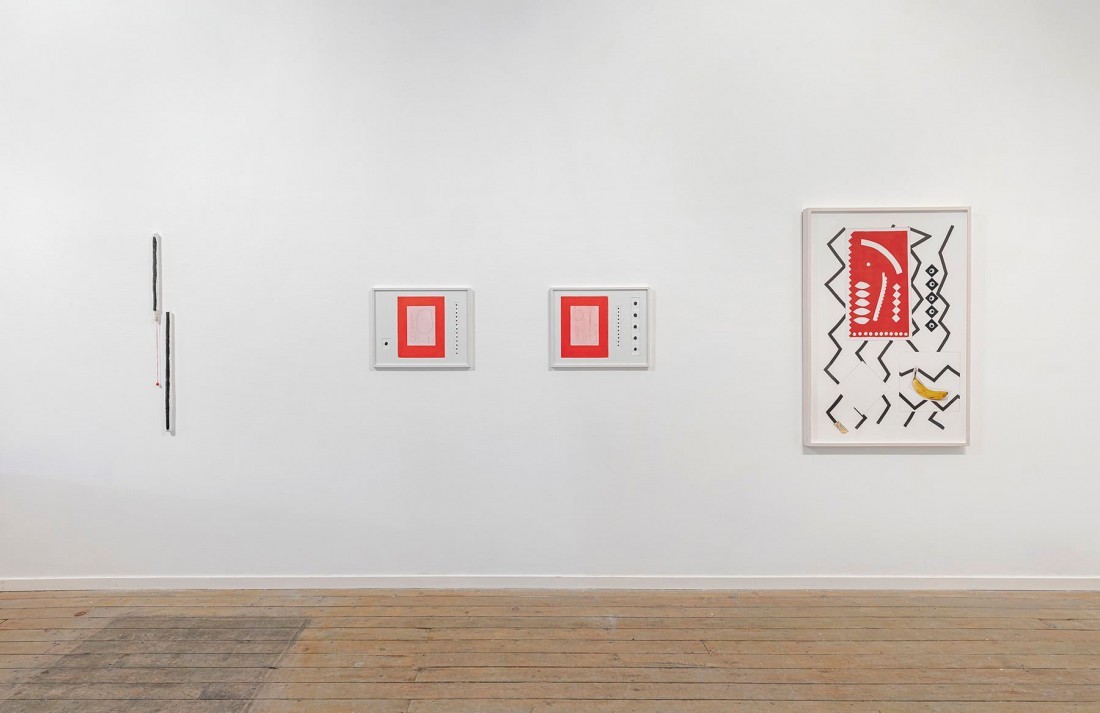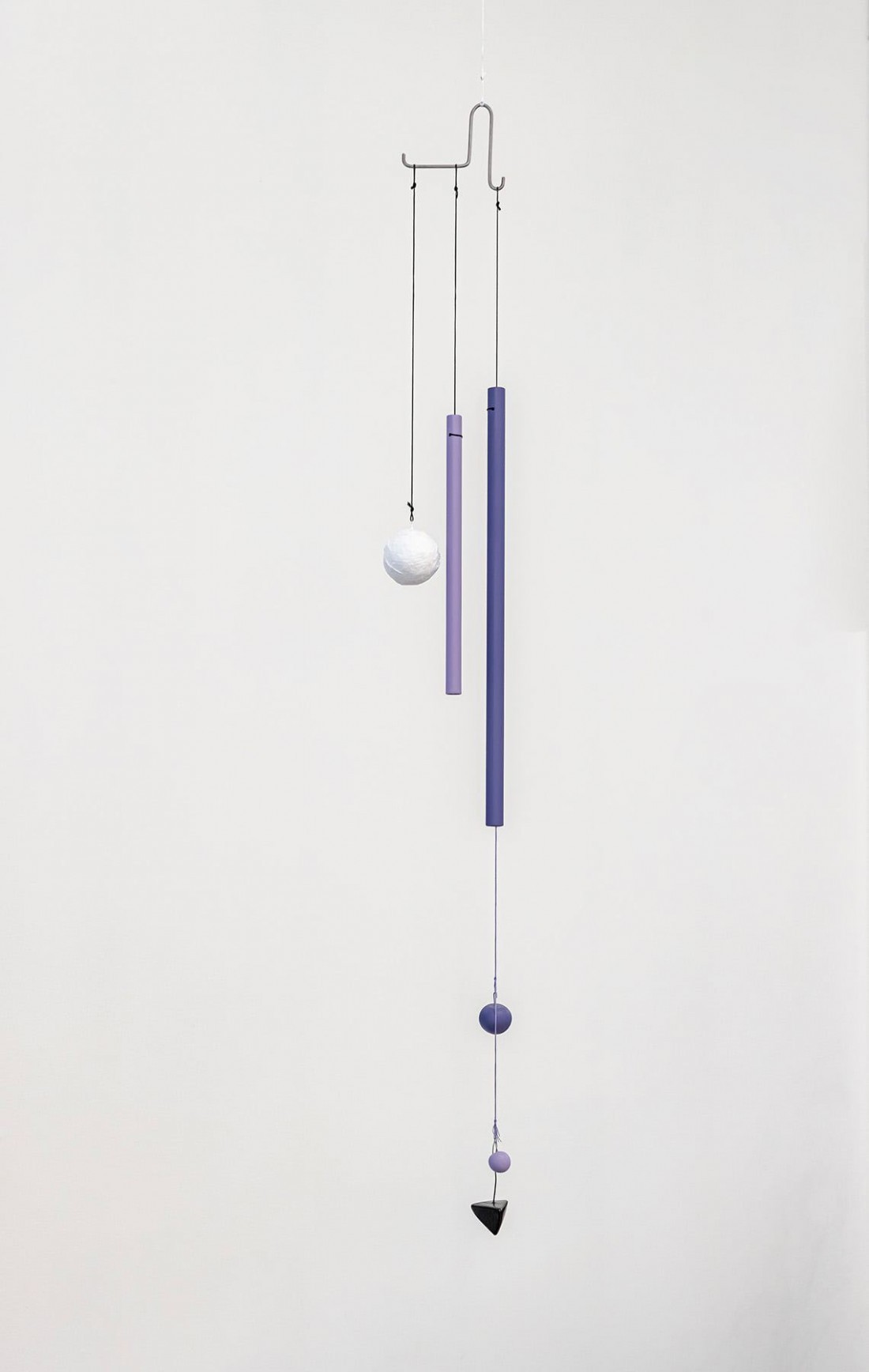Zin Taylor
Like most of us, I haven’t seen much live art lately. And while web-mediated art may be better than no art at all, two things became increasingly clear to me in the last couple of years: 1. good art does not necessarily make for good JPEGs, and 2. the Internet has spawned new extremes of creative selflegitimation in the form of exhibition statements. Of course, art that can sustain serious in-person looking is at least as difficult to do as ever. Zin Taylor’s recent exhibition, “Parallel Wands,” at Susan Hobbs Gallery was, for me, a great re-entry to a real-time-and-space art encounter: in-person art that packed a substantial return just for showing up at the gallery.
Not atypical for Taylor—and somewhat contrary to my suggestion that you had to be there—the show is pretty spare in its parts. It’s difficult to say exactly how many works are in the exhibition as things connect, disconnect and seem to change places across the two floors of this Toronto gallery. Three modestly sized framed works on paper hang in the ground floor space and another three upstairs. A half-dozen “wands” and roughly as many “dots” (handpainted, baton- and sphere-shaped forms each measuring no more than three inches across, some as long as 36 inches) hang from, lean on and stick to the walls. Plus a skinny indoor wind chime. There’s also a flat-screen TV, a bit of an anomaly in an otherwise fragile array of crafted, concise object statements.

Zin Taylor, installation view, “Parallel Wands,” 2022, Susan Hobbs Gallery, Toronto. Photo: Toni Hafkenscheid. Photos courtesy Susan Hobbs Gallery, Toronto.
A precise yet playful attention is at work in the distribution of the exhibition’s few elements. Physical proximity among framed works and objects varies, and establishing visual associations between things across broad expanses of white and grey space is left, for the most part, to the viewer’s discretion. When the viewer enters the gallery, the strongest initial impression is how substantially this modest assembly of things activates the room. There’s a perceptible shimmer suffusing the awkward architectural space—a lyrical, slightly cranky, mirage. The visual payoff is far greater than the sum of all the small parts, and the general glow of the show falters only at moments, notably, when I confronted the plastic reality of the TV screen and when a wand confronts the stairs leading to the upstairs gallery. Whether this object is attempting conversation or aspiring to functionality, the architecture overwhelms it.
The same attention and economy animating the room continues within the frames of the works on paper, as my focus zooms in from the overall installation to the specifics under glass. Looking at the flat works, my perceptions drift through scale references and various points of orientation. These “drawings” substitute open-ended visual conversation for fixed meaning or gestalt. Identifiable image is subsumed by shifting suggestions of plans, elevations, inscriptions and casual notes to self. Tropes from manuscript illuminations bump up against caveman code writing. Repeating rectilinear cut-outs evoke adolescent DIY game consoles or Jigs for aligning thoughts. Hints of omniscient bird’s-eye views are foiled by an eyeball/dot or two staring back at you. For such materially humble things, they facilitate a lot of looking.
Repetitions and recombinations in the drawings link them morphologically back out to the objects in the room and vice versa, turning objects into 3D calligraphy and flatwork into space. Zooming into and out from framed pictures and small objects to the specifics of the architectural envelope and back provides a large part of the exhibition’s perceptual kick.
Accompanying this visual reverb, indications of process—incisions, repositionings and the occasional thumbprint, indexing decisions, inspirations and casual labour—allow the viewer a sense of the pleasure that went into crafting the work. Worm-like wands and more or less spherical dots appear to be quickly, if carefully, formed from epoxy clay and likewise embellished. Dots do double duty, occasionally returning from their spatial forays to their 2D origins: daubs of black ink adorning a wand and/or figuring prominently in the framed space of the drawings.

Zin Taylor, A Floating Arrangement (The Formation of a Pyramid Through Lavender Steps), 2022, brass, copper, enamel alkyd paint, epoxy clay, nylon string, plaster, wire, 103 x 14 x 7.5 centimetres.
Among the perceptual calisthenics that the artist seems keen to have us perform is to exercise the dimensional intelligence required to imagine that a line, seen from its end, is a point—or a wand, a dot in Taylor’s geomantic lexicon. Clearly not quantum theory, but this pointto- line, wand-to-dot dimensional play might bring to mind Flatland, by English writer Edwin Abbott. Abbott’s 19th-century novella is an allegory about geometric creatures that separately inhabit each of the three dimensions and have a hard time imagining the limitations and/ or liberties of each other’s spatial worlds. I’m inclined to think that the class metaphor implicit in Abbott is totally absent in Taylor, who seems rather to be on a more anthropological excursion in search of the origins of human graphic intelligence—one of the many trips he’s been on for the past decade and which comes into clearer focus with this exhibition.
The moderately cryptic and mercifully succinct artist’s statement that accompanies the exhibition reassures me that my ability to collaborate in the generation of meaning is the larger part of this exhibition’s point. The idea that the viewer of contemporary art has an active responsibility in the generation of meaning has a multitude of specific histories. Taylor’s investment in providing us with a visual challenge and his foregrounding of the viewer as meaning assembler benefits from these histories and from an audience that prefers not to be spoon fed. He invites us to participate through an aesthetic that is approachable in its plain materiality and its modest eccentricity, while avoiding both minimalism’s parsimony and the pandering hyperbole common to more overt attempts at social engagement in the name of art.
This puts the exhibition out of step with some of the other art fare on offer in Toronto these days. Taylor’s be-here, look-see, try-to-be-okay-with-your-ability-toform- your-own-thoughts-based-onyour- own-perceptions approach is a welcome counterpoint to the content- heavy, proselytizing thematics common to other, larger scale exhibitions in town. Some shows take up a lot more space and use a lot more stuff than this one, but, paradoxically, their lessons might as readily be digested through online JPEGs and accompanying textual ballast. ❚
“Parallel Wands” was exhibited at Susan Hobbs Gallery, Toronto, from March 24, 2022, to April 30, 2022.
James Carl is an artist who lives in Toronto.

